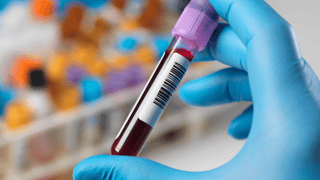Introduction
Doing a proper material selection reduces the risk of biocompatibility testing failure during product development. During the design of a medical device, the biological assessment process involves a selection of the most suitable material. A review should be conducted to determine whether the material meets the design requirements (e.g., Elongation, lifetime, and mechanical strength), Biocompatibility (Implantable and non-toxic) as well as the clinical suitability of materials for the application.
A few materials have a long history of safe use and are supported by readily available toxicology data. Using such materials in medical devices accelerates development and reduces the cost associated with the biocompatibility assessment. On the other hand, novel materials may be better in performance but are costlier and takes longer to develop because of the requirement to be tested for biocompatibility.
Specific performance and safety requirements must be met by medical devices and the materials used to make them. Physical, chemical, and material limitations, as well as biochemical, molecular, and cellular processes within the body known to occur upon blood contact, may limit the material selection criteria. In the latter scenario, reactions may be positive or negative, largely influenced by the design plan. As a result, choosing which tests are necessary and establishing which test results are valid as well as significant for the development of a novel medical device can be challenging.
The choice of appropriate material is important to avoid biocompatibility failure.
1. REGULATORY PERSPECTIVE ON MATERIAL SELECTION
1.1. ISO 10993 - Biological evaluation of medical devices
As per section 6.1 of ISO 10993-1:2018, the extent of physical and/or chemical characterization required depends on –
- what is known about the material formulation,
- what nonclinical and clinical safety and toxicological data exist, and
- on the nature and duration of body contact with the medical device.
At a minimum, the characterization shall address the constituent chemicals used in the medical device and possible residual process additives used in its manufacturing. In addition, some physical characterization information may be needed for implanted medical devices or medical devices in contact with blood. Material characterization, if performed, shall be conducted according to ISO 10993-18 standards. For nanomaterials, we should refer to ISO/TR 10993-22. If the combination of all materials, chemicals, and processes has an established history of safe use in the intended application, and the physical properties have not changed, then further characterization and additional data sets (e.g. chemical analysis of extracts or biological testing) may not be necessary. However, in this case, the rationale shall be documented.
As per section 6.2, the primary purpose of the ISO 10993-1:2018 guideline is to protect humans. A secondary goal is to assure animal welfare and to reduce the number as well as exposure of test animals. ISO 10993-2 applies to all in vivo testing under consideration except in the following cases. Additionally, invivo testing shall not be carried out where
- Results from previous relevant studies are available.
- the existing non-clinical and clinical data, including a history of safe use that meets biological evaluation requirements. If we still do the in vivo animal testing, then it would be considered unethical.
1.2. New draft guidance from FDA
On October 15, 2020, the U.S. Federal Food and Drug Administration (FDA) released a new draft guidance “Select Updates for Biocompatibility of Certain Devices in Contact with Intact Skin”, which supersedes applicable sections of the 2016 biocompatibility guidance.
Many devices have intact skin (outer surface of the skin) contacting materials that are made from polymers and fabrics. FDA believes that these materials pose a very low biocompatibility risk when in contact with intact skin because they have a long history of safe use in medical devices. FDA expended significant efforts and identified specific device materials which have low biocompatibility risk when used with intact skin. This is done to obtain sufficient rationales to justify the omission of biocompatibility testing for frequently used intact skin contacting medical devices. This approach also supports the principles of the “3Rs,” to reduce, refine, and replace animal use in testing when feasible. This approach is partially based on FDA’s review experience in premarket submissions with these common polymers and fabrics.
Medical devices included in this policy should meet the following characteristics:
- that contact intact skin surfaces only, as described in section 5.2.2 (a) of ISO 10993-1:2018
- Duration of the contact with intact skin
- limited (≤24 hours),
- prolonged (>24 hours to 30 days),
- and long-term (>30 days, including repeat use devices.
2. SAFE HISTORY OF CLINICAL USE
Can the safe clinical history of a medical device (no complaints documented in PMS) be used to justify not considering the risk of leachable/extractable/particle release in the biocompatibility assessment? This is determined mostly by the material or manufacturing change for your subject devices under examination. The initial response is yes, but there are other disadvantages. The in-depth explanation is significantly convoluted. To begin, the concept of "history of safe clinical use" is defined in ISO 10993-1:2018. The standard's Clause 6.1 states:
"If the combination of all materials, chemicals, and processes has a proven track record of safety in the intended application, and the physical properties have not changed, then additional characterization and data sets (e.g., chemical analysis of extracts or biological testing) may not be required." In this scenario, the reasoning must be documented.
Annex C of ISO 10993-18:2020 outlines the concepts for achieving biological equivalency. If the biological equivalence is established, then the biological risk assessment of a new or modified medical device is considered satisfactorily complete.
CONCLUSION
Medical devices are developed and produced with a specific and intended function in mind, which is to improve the quality of life and safety of patients. To do this, medical devices must be simple to use and perform as intended by the manufacturer's instructions without jeopardizing the safety of patients, users, or patients' clinical circumstances. As a result, medical devices should comply with and meet the requirements established by the fundamental principles of safety and performance. Both the manufacturer and the regulatory authority share responsibility for the safety and performance of medical devices.
Selecting the right materials is crucial to avoid material failure as well as accelerate the development process of medical devices. For a medical device to perform and function well, correct material selection maximizes product durability and usefulness.
Decos can help you in selecting a biocompatible material with a history of safe use that assures safety and performance. We review the relevant available research and data similarities of the material or medical device during the selection process.
REFERENCES
-
ISO 10993-1:2018 Biological evaluation of medical devices-Part 1: Evaluation and testing within a risk management process
-
FDA Guidance Document Issued June 16, 2016, Use of International Standard ISO 10993-1, “Biological evaluation of medical devices-Part 1: Evaluation and testing within a risk management process”
-
Select Updates for Biocompatibility of Certain Devices in Contact with Intact Skin, Draft Guidance for Industry and Food and Drug Administration Staff, Document issued on October 15, 2020
-
S Altayyar et;al, The Essential Principles of Safety and Effectiveness for Medical Devices and the Role of Standards, Medical Devices: Evidence and Research 2020:13
This article was provided to you by Decos, a cutting-edge technology services partner ready to meet your software needs in the medical domain. If you have a question on one of our projects or would like advice on your project or a POC, just contact Devesh at devesh.agarwal@decos.com. We’d love to get in touch with you!






